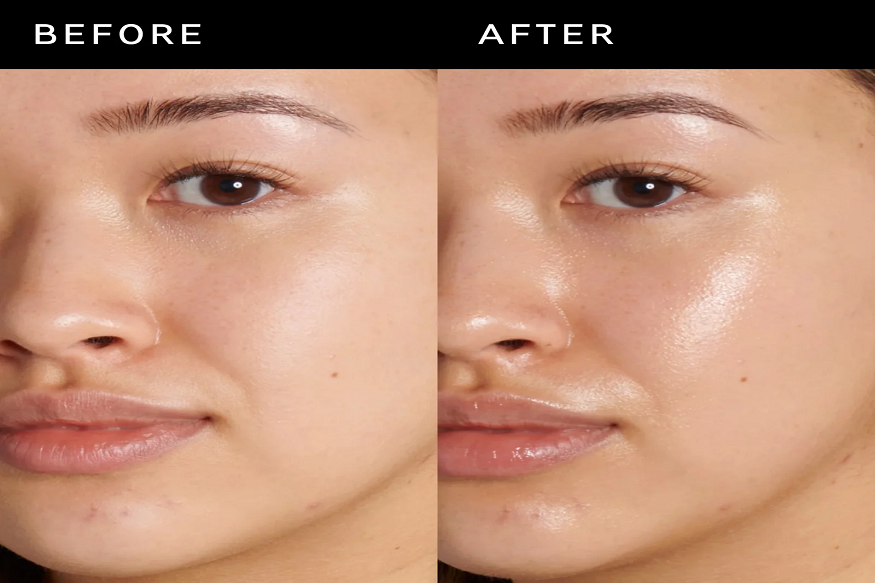Regular sunscreen serves as an essential shield against damaging ultraviolet radiation from the sun therefore, it should always be part of your skincare routine. Sunscreens do not share identical characteristics. The type of sunscreen you must use depends strongly on your skin type. Oily-skinned individuals look for lightening sunscreens to reduce oil excess and obtain natural radiance, but people with dry skin need protective sunscreen for dry skin products with moisturizing properties. People require knowledge about their skin’s needs to discover optimal solutions.
- The Importance of Sunscreen for Every Skin Type: Skin cancer risk increases significantly because of sun exposure to UVA and UVB radiation, and simultaneously generates sunburns and accelerates the aging of the skin. Daily sunscreen application minimizes the occurrence of the mentioned problems. The wrong sunscreen choice can intensify dryness while also producing an unpleasant glossy appearance, which affects people with either oily or dry skin types. Your sunscreen will enhance your comfort while making you appear more attractive, and benefiting your overall skin health when it suits your requirements.
- Understanding Dry Skin and Its Needs: The symptoms of dry skin include crusty and stiff areas as well as a rough skin texture with possible mild redness and discomfort because the skin lacks necessary moisture. Environmental stresses affect dry skin strongly due to its reduced sensitivity, especially when exposed to sunlight. The selection process for sunscreen requires hydration as a main consideration to suit dry skin needs. Keeping the skin barrier healthy, together with preventing further dehydration, becomes achievable when using a solution that combines protective elements with hydrating properties.
- Ideal Ingredients for Sunscreen on Dry Skin: The focus for suitable sunscreen products should be a combination of nourishing agents and moisture retention ingredients for dry skin types. Look for dermatological formulations that contain hyaluronic acid and glycerine since these substances draw moisture to your skin surface. The outer skin receives protection through dimethicone or petrolatum, but squalane, shea butter, and natural oils work better for surface skin smoothing. Such products come in thicker formulations that exist as creams or lotions. The sunscreen defends against both UV rays and treats the primary source of dryness by keeping moisture within the skin. Avoid chemical-based products that contain high alcohol or strong chemical concentrations because they will worsen dryness while causing additional irritation.
- Application Tips for Dry Skin: The most effective way to use sunscreen with dry skin is to apply it immediately after moisturizer when your skin remains slightly wet. This keeps the hydration in. Use sunscreen outside according to your water activity level by using new sunscreen every two hours of swimming and sweating, or frequently. Putting moisturizing sunscreen on your hydrating serum creates extra protection for winter skin since dry conditions cause the skin to deteriorate.
- Understanding Oily Skin and Its Challenges: The primary cause of oily skin consists of overproduced sebum that blocks pores to result in both frequent breakouts and excessive facial oil. The search for suitable UV-protecting sunscreen can be difficult for those with oily skin since their face needs products that float rather than create heaviness. People who have facial oil dilemmas need sun protection that reduces their oil signature and still makes their skin more attractive.
- Brightening Sunscreens for Oily Skin: Brightening sunscreens blend the ability to block UV radiation with their core function of enhancing skin brightness, along with dark spots reduction and skin dullness reduction. The skin-safe sunscreen products for oily skin come as non-oil-based, lightweight formulas that do not block pores. People should look for sunscreens that contain arbutin and liquorice extract along with vitamin C and niacinamide as brightening agents. The active ingredients gradually work to decrease pores and normalize skin colour, and manage sebum production levels. Some brightening sunscreens contain light-diffusing particles that immediately give coverage while avoiding oiliness in users’ skin.
- Texture and Finish Matter for Oily Skin: Texture is just as crucial for oily skin types as the chemicals. Sunscreens that are gel-, fluid-, or water-based absorb rapidly and provide a matte or natural-looking finish. Because they do not slip off the skin or mix adversely with perspiration, they are perfect for hot, humid regions. In addition to providing a healthy, balanced shine, a good brightening sunscreen for oily skin should leave the skin feeling clean and breathable. For people who get too much shine throughout the day, mattifying formulations or powder sunscreens may also be helpful. These products provide an additional layer of protection and oil control and can be used as touch-ups over makeup.
- Application Tips for Oily Skin: Wash your skin thoroughly before sunscreen application, while you may require a moisturizer of non-oily consistency. Sunscreen application needs to occur after your moisturizer completes absorption to stop the products from separating. People with oily skin should use sunscreen that balances pores, along with priming features, since these characteristics both minimize shine and hide pores when they apply makeup. The application of sunscreen wears easily with oily skin through specific sprays or powders designed for such skin types. Keep both a spray and compact in your bag if you want safety from the sun all day.
- Common Mistakes to Avoid: Certain sunscreen errors might lessen its effectiveness, regardless of whether you have oily or dry skin. Under-application is one of the most prevalent most individuals do not apply enough to completely protect their skin. A shot glass full is needed for the entire body, and around a teaspoon for the face. Another error is not wearing sunscreen on overcast days or indoors near windows. Even through glass, UVA radiation can cause skin harm. For long-term effects, such as skin lightening and anti-aging, consistent usage is necessary. Additionally, do not only use SPF-containing cosmetics. Although useful, makeup usually lacks adequate SPF or is not applied in enough amount to provide complete protection. For the best protection, use a different sunscreen below.
The decision to choose proper sunblock plays a vital role in maintaining healthy skin because it applies to both dry and oily skin types. Dry skin protection can be achieved through moisturising sunscreens with hydrating components that build up skin barrier strength and minimize flakiness. The brightening sunscreen for oily skin with an oil-free formula both blocks sunrays and improves skin brightness while controlling shine in oily skin. A sunscreen that matches your skin needs without disrupting your daily activities stands as the best choice. People now have easy access to sunscreens that combine great performance with comfortable application, which defend their skin health and appearance, because innovative products have expanded the market choices.



